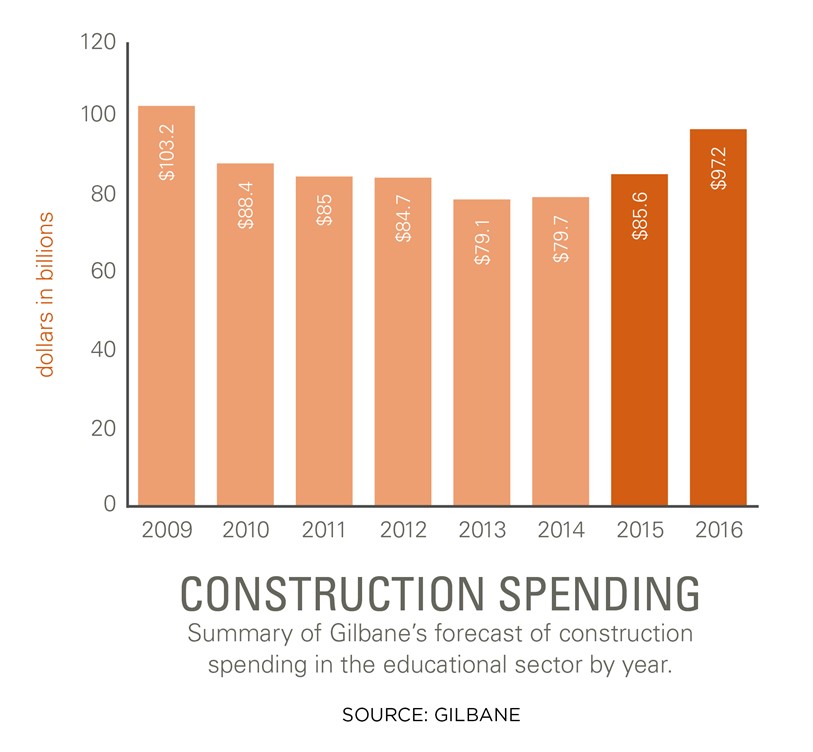Strong Construction Trends Create Challenges Too
Know your local market to better compete
The rebounding construction industry is headed for another big year and that’ll impact colleges and universities that expect to build, too.
The latest construction spending report by market researcher Gilbane predicts that total construction spending in 2015 hit $1.1 trillion and will grow 9.7 percent this year.
Let’s put that in another context. Growth in construction spending may reach 30 percent for the three years of 2014, 2015 and 2016. That would set an all time high, Gilbane says.

The report doesn’t drill into projections for spending on STEM facilities, as we’ve done in a previous blog. But Gilbane sees robust construction ahead for all of education. It expects spending this year on education buildings to rise 13.6 percent over last year. Last year, spending was up 7.4 percent from the year before, marking the first substantial increase since 2008, Gilbane says.
Other forecasters are less optimistic. The report notes that the average prediction for education spending this year is for a 4.5 percent jump from last year.
Whatever the exact performance of construction spending this year, it will be a boon for local economies, regions and states. It will also continue to put pressure on the building trades.
The construction industry added one million jobs in the last five years and 800,000 in the last three years. Still, the industry in October showed 139,000 unfilled position, the BLS Job Openings and Labor Turnover Survey says, as noted by Gilbane. The number of open positions has been trending upward since 2012. That indicates high demand for labor and could leader to higher rates, Gilbane says.
What’s more, 86 percent of 1,358 construction firms surveyed reported trouble finding qualified craft workers, a September report from the Associated General Contractors of America indicated.
We see these challenges as ones stemming from prosperity. The Great Recession ravaged the construction trades, local economies and put a huge damper on building of STEM facilities which we know are critical to educating the labor force of the future.
Yet the recent increases in labor rates, and shortages of labor, have also created challenges for colleges and universities. They often operate on long timelines to get projects started and finished. As we’ve noted in a previous blog, higher labor rates, shortages of labor and construction materials, and other factors, have caused some university or college projects to recently come in over budget and, thus, have to be redesigned or downsized.
The latest Gilbane report underscores once again how important it is to know what’s happening in your local construction economy. How many homes are being built? What about malls and offices? How many competing projects will you have to contend with when you go to bid with your university or college project? All of this information will better prepare you for the bidding process and throughout the construction phase, too.
With such a strong forecast for education building at all levels, the best informed administrators may have their projects positioned one step ahead of others in the competition for contractors, labor and attention.
This post was written with contributions from Timothy F. Winstead, AIA, LEED AP
